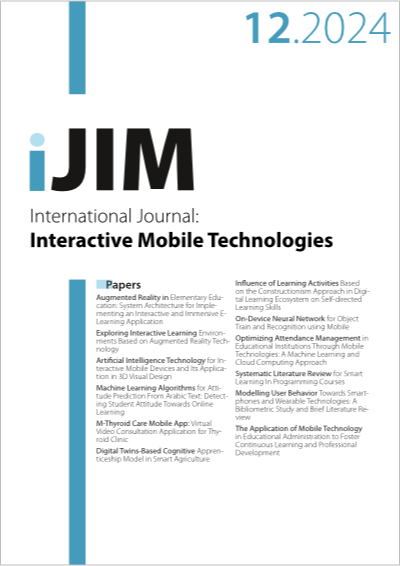Artificial Intelligence Technology for Interactive Mobile Devices and Its Application in 3D Visual Design
DOI:
https://doi.org/10.3991/ijim.v18i12.49069Keywords:
Artificial intelligence, 3-D visual design, 3-D reconstructionAbstract
The use of visual rationality in planning and designing indoor 3D spaces can effectively enhance the quality of environmental art design. For the rational planning and design of 3D spaces, it is essential to assign attribute values to the rational evaluation index of 3D space planning, determine the weight vector of rational evaluation factors for indoor 3D space planning, and accomplish the visual rationality planning and design of indoor 3D spaces. 3D reconstruction is one of the primary objectives and focal points of machine vision research. The principle is to extract 3D information from the 2D image captured by the machine’s sensors in order to reconstruct a 3D scene model. The traditional method constructs the evaluation index system for indoor 3D space planning to determine the weight of the evaluation index for alternative points. However, it overlooks the weight vector of the evaluation factors, leading to low accuracy in rational planning. This paper optimizes the effect of structured light reconstruction using photometric stereo vision. Firstly, the text delves into the impact of light sources on the 3D reconstruction effect. Subsequently, a fusion algorithm combining 3D and structured light reconstruction methods is introduced, leveraging artificial intelligence (AI) technology. Experimental results show that this algorithm has a superior 3D reconstruction effect.
Downloads
Published
How to Cite
Issue
Section
License
Copyright (c) 2024 Chun Zhang

This work is licensed under a Creative Commons Attribution 4.0 International License.



